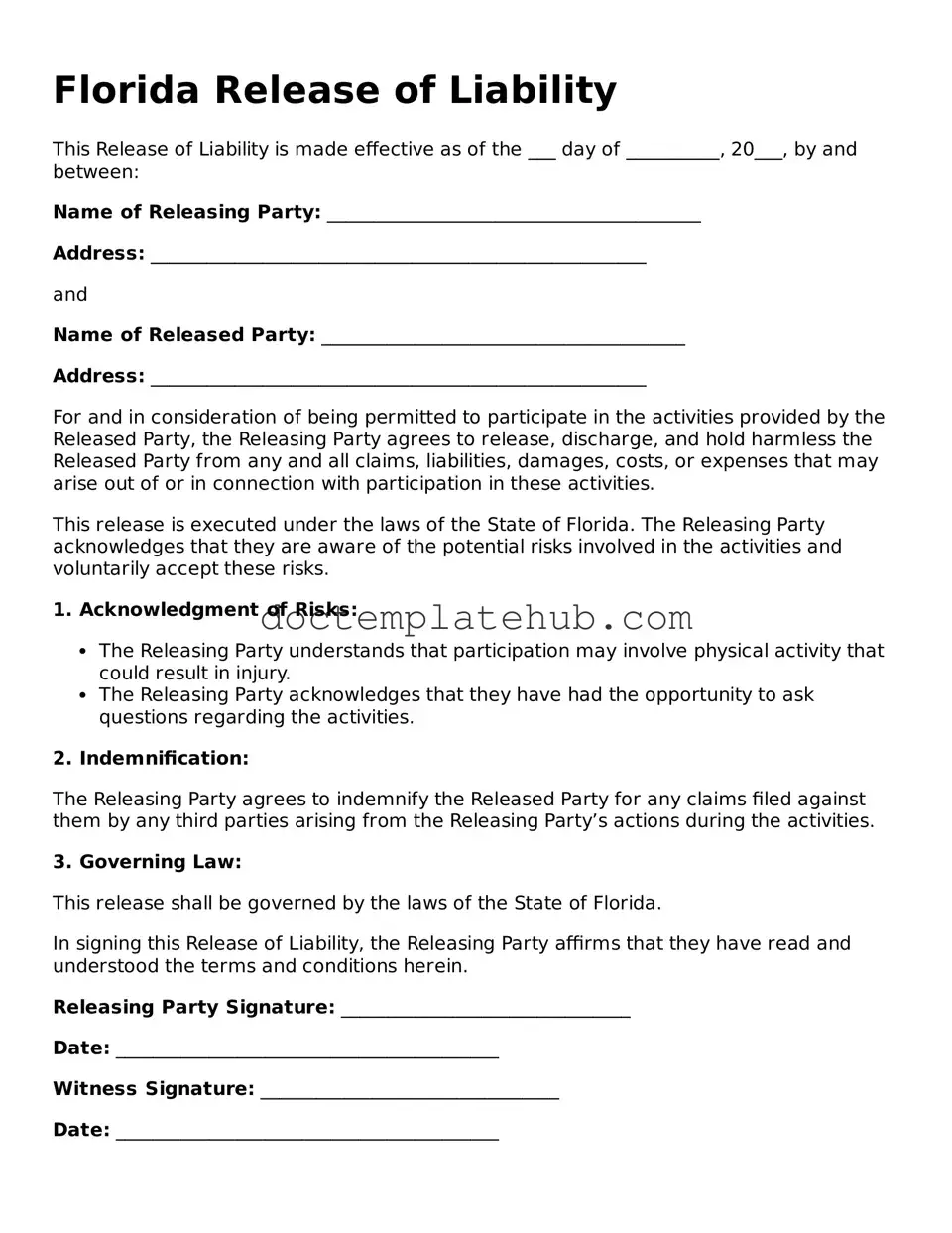What is a Florida Release of Liability form?
A Florida Release of Liability form is a legal document that protects an individual or organization from being held responsible for injuries or damages that may occur during a specific activity or event. By signing this form, participants acknowledge the risks involved and agree not to hold the organizer liable for any accidents or injuries that may arise.
Who should use a Release of Liability form?
This form is commonly used by businesses, event organizers, sports leagues, and recreational facilities. Anyone hosting an event or activity where there is a risk of injury should consider using this form to minimize their legal exposure. It is particularly important in high-risk activities like sports, adventure outings, or community events.
Is a Release of Liability form legally binding in Florida?
Yes, a properly drafted and executed Release of Liability form can be legally binding in Florida. However, it must meet certain legal requirements to be enforceable. These include clear language, voluntary agreement, and a specific mention of the risks involved. Courts may not enforce the form if it is deemed overly broad or if it waives liability for gross negligence.
Can minors sign a Release of Liability form?
Minors cannot legally sign contracts, including a Release of Liability form, on their own. However, a parent or legal guardian can sign on behalf of the minor. It’s crucial to ensure that the form is clear and that the guardian understands the risks involved, as this helps protect the organization from potential claims.
What should be included in a Florida Release of Liability form?
A comprehensive Release of Liability form should include the following elements: a clear description of the activity, an acknowledgment of the risks involved, a statement releasing the organizer from liability, and a section for the participant's signature. It may also be beneficial to include an indemnification clause, which requires participants to cover any legal costs incurred by the organizer due to claims arising from the activity.
How can I ensure that my Release of Liability form is effective?
To maximize the effectiveness of your Release of Liability form, consult with a legal professional who understands Florida law. They can help you draft a form that meets legal standards and is tailored to your specific activity. Additionally, ensure that participants read and understand the form before signing it, as this demonstrates that they are aware of the risks involved.
What happens if someone gets injured despite signing the Release of Liability form?
Even with a signed Release of Liability form, injured parties may still pursue legal action. However, the form can serve as a strong defense against claims, provided it is properly drafted and executed. If the injury resulted from gross negligence or willful misconduct, the release may not be enforceable. Each case will depend on its specific facts and circumstances.
Can a Release of Liability form be revoked after signing?
Once signed, a Release of Liability form generally cannot be revoked unless both parties agree to it. Participants should understand that by signing, they are waiving certain rights. However, if there are significant changes to the activity or if new risks are introduced, it may be prudent to have participants sign a new form to reflect those changes.
